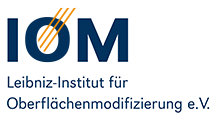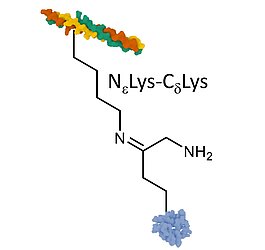Collagen represents the main component of the extracellular matrix of vertebrates and as such can serve as an excellent basis for the development of artificial tissue substitutes. Central to such applications - in addition to compatible structure and biochemistry - are mechanical properties that mimic native tissue.
In an interdisciplinary collaboration between the IOM Department of Biocompatible and Bioactive Surfaces and the Felix Bloch Institute for Solid State Physics at the University of Leipzig, scientists have now demonstrated that electrons are excellently suited for variably adjusting mechanical properties by inducing the formation of cross-links in the collagen network. In this process, individual amino acids - especially L-lysine - are more inclined to bond under electron irradiation than others. The processes are similar to those in the human body, i.e., biomimetic. The first step to lysine crosslinking in the body is oxidation on a lysine molecule, i.e., a chemical change that allows it to bind to another lysine. By means of electron irradiation, we simulate this oxidative environment, so to speak, so that lysine reacts to it, explains M.Sc. Nils Wilharm project supervisor at IOM and European Social Fund grantee. Collagen treated with energetic electrons can thus be used as a novel basis for artificial tissue, as it were, since we are imitating nature here, adds Prof. Dr. Stefan Mayr, head of the Department of Biocompatible and Bioactive Surfaces at the IOM.
This opens up completely new avenues for medical research, since amino acids are the constituent of all tissue. Is it now possible to produce or even repair any desired type of tissue just like that? In principle, yes, and other materials are already being investigated with regard to their reaction to electron irradiation. It is already becoming apparent that the process is suitable for a wide variety of materials.
The results on the mechanism of electron irradiation have now been published in the renowned journal Acta Biomaterialia. Detailed information in the article:
Biomimetic crosslinking of collagen gels by energetic electrons: The role of L-lysine
N. Wilharm, M. Bertmer, W. Knolle, J. Griebel, C. Elsner, S. G. Mayr

